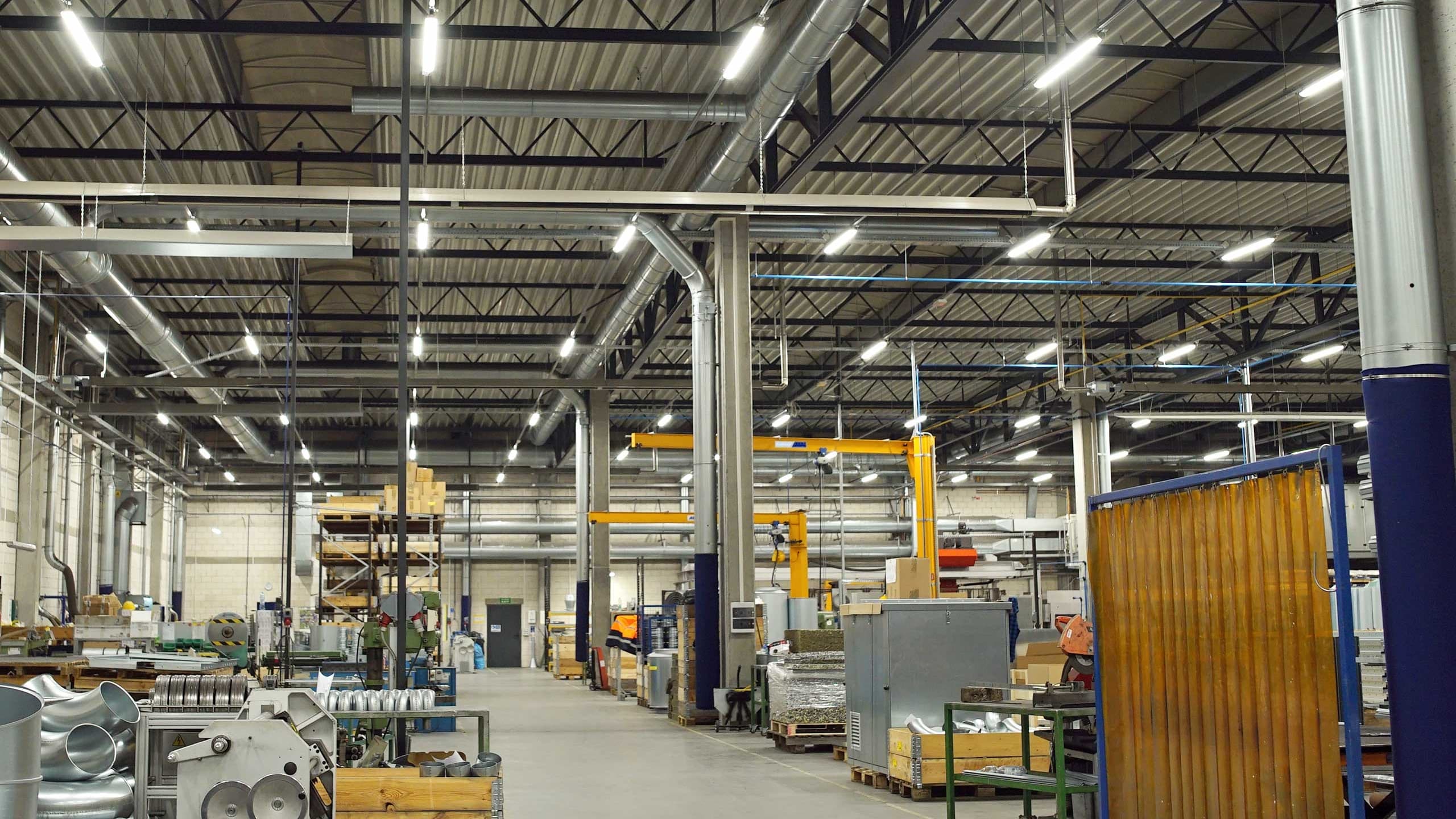The luminous flux of LED lighting is given in lumens. With traditional light sources, on the other hand, the luminous intensity was usually determined as the power they consumed in watts. To be able to at least compare the two sources to some extent, it is necessary to convert lumens to watts. Therefore, in this article we address the following questions:
- What are lumens and watts?
- How can lumens be converted to watts?
- Luminous efficiency, or what else does lumens per watt mean?
- What are the factors affecting the efficiency of LED luminaires,
- How to convert luminous flux in terms of luminaire data?
Lumens and watts – specific units of light sources
A lumen is defined as a unit of luminous flux emitted by a light source such as an LED luminaire. The higher its value, the more light energy is emitted by it. Watts, on the other hand, refer to the wattage of a bulb, that is, the amount of energy that is consumed by it for the purpose of illumination. Typically, it used to be an indicator for assessing the brightness of light, which was not quite right, since it is only a part of it.
Is it easy to convert watts to lumens and lumens to watts?
The luminous flux of a luminaire is affected by several parameters. These include:
- the power of the light source,
- the intensity of light,
- the colour of light, its colour temperature,
- colour rendering index.


These specifications are also closely related to the technology of making light sources and can be a kind of a calculator of lumens to watts. In addition, another relationship can be seen from this – the efficiency of the sources, i.e. the number of lumenswhich specify the light output. LED luminaires are characterised by the highest efficiency, reaching up to 230 lm/W. Conversely, the least favourable are tungsten light sources. Moreover, based on the above data, you can approximately convert lumens to watts of luminaires of different types.
What else does lumens per watt mean?
Modern LED light sources are technically advanced products. Technical documentation contains a great deal of relevant data. One such feature is luminous efficacy, also called luminous efficiency. This parameter is particularly important in the process of estimating the return on investment of a lighting system. Luminous efficacy is expressed as the lumens per watt (lm/W) unit, which indicates how efficiently a light source converts electrical energy into luminous flux. This is also indicated by a chart. Only by having reliable data on a LED luminaire, is it possible to correctly estimate its efficiency.
Factors affecting the efficiency of LED luminaires
What factors affect the lumens per watt relationship? The LEDs used and the way they are powered are of fundamental importance. To make a lamp with high efficiency the light source peformance has to be optimised. This includes, in particular, ensuring the correct thermal management, which has a significant impact on the performance of the LED and its lifetime. Another important aspect is the use of power systems with high efficiency. Working at the optimum operating point, they guarantee that the luminaire is supplied with a current of the correct value.


It is also important to mention a properly adjusted optical system. Industrial luminaires have optics and a diffuser which shape the photometric body and the final efficiency of the LED lamp.
Other factors that affect the efficiency of luminaires include the soldermask of the LED module used, the shape of the housing and the use of other elements that increase the efficiency of light generation.
Lumens to watts converter – how not to be mislead by unreliable data?
The process of analysing the parameters of LED luminaires is an important stage of product evaluation. To do this, verify if the data provided by the manufacturer relates to the real parameters of the luminaire. A common practice is to provide transient parameters. Then, the luminous flux and lamp power do not take into account losses due to their design. On the other hand, what is most relevant is the real power drawn from the power grid and the amount of light, that is, lumens that are generated by the LED luminaire.

To conclude…
How much power is needed to get the required luminous flux? How many lumens will be generated from 1 watt? This depends on the light source. Note that the most efficient solution is LED lighting. Are you looking for lighting suitable for an industrial or commercial facility? Do you have questions related to the light output available to LED luminaires? Make an appointment for a free consultation – we will help you choose the best solution.

Do you have additional questions?
Ask our expert
See other articles
What is discomfort glare?
Every one of us has, on more than one occasion, experienced dazzling light, which, in practice, is known as discomfort glare. Commonly referred to as glare, this effect adversely affects the eyes, reducing vision and recognition.
What is BMS?
BMS is an acronym that stands for Building Management System. It controls multiple technical functions of a building and its immediate surroundings.

Masz dodatkowe pytania?
Zapytaj naszego eksperta



